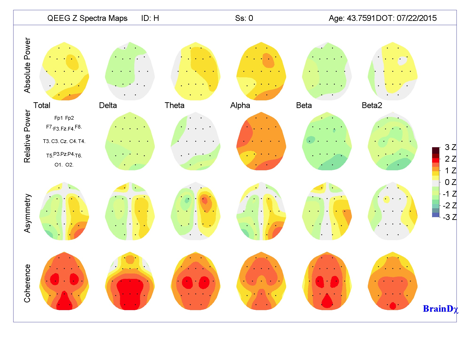Unlocking the Mysteries of the Brain Through qEEG Brain Mapping Techniques in Mental Wellness Assessment
Unlocking the Mysteries of the Brain Through qEEG Brain Mapping Techniques in Mental Wellness Assessment
Blog Article
Comprehending the human mind is a challenging endeavor, particularly when it pertains to mental health. Conventional approaches of evaluation often depend on conversations and surveys, which can sometimes miss crucial details about how the brain functions. This is where qEEG brainwave analysis, or qEEG, comes into the picture. qEEG is a specific technique that assesses neural signals in the brain. By examining these neural patterns, psychological health professionals can obtain important insights into a person's psychological condition, aiding to enhance assessment and intervention.
qEEG works by applying small sensors on the scalp to record brain signals. These electrodes detect electrical signals produced by neurons, the cells in the cerebrum that communicate with one another. The data collected is then analyzed and presented as a series of waveforms. Each kind of neural wave—such as alpha, beta, delta, and theta—relates to various mental states and functions. For example, alpha waves are commonly associated with calmness, while beta waves are linked to active cognition and problem-solving. By analyzing these patterns, clinicians can identify abnormalities that may suggest psychological health issues.
One of the significant benefits of qEEG is its ability to provide objective information. In contrast to conventional evaluations that rely on subjective reports from patients, qEEG provides a distinct view of neural function. This special info objectivity can help minimize biases in assessment and lead to more accurate intervention strategies. For example, if a patient is experiencing anxiety, qEEG can reveal specific trends of neural function that are linked with anxiety disorders. This information enables psychological health experts to customize treatments more effectively, whether through therapy, medication, or other treatments.
Moreover, qEEG can be particularly beneficial in monitoring intervention progress. By conducting qEEG assessments at different stages during treatment, healthcare providers can monitor variations in neural function over period. This ongoing evaluation helps determine whether a treatment is effective or if adjustments are needed. For example, if a patient is not responding to a particular medication, qEEG may indicate that their neural function has not altered in a manner that suggests progress. This response cycle can result to more customized and efficient mental health care.
In conclusion, qEEG brain mapping is a powerful instrument in the field of mental health assessment. By offering unbiased information about neural function, it improves the comprehension of different psychological health disorders. This method not only assists in precise diagnosis but also helps in tracking intervention success. As psychological health experts persist to explore the potential of qEEG, it holds promise for improving the lives of individuals dealing with psychological health challenges. With ongoing investigation and progress in techniques, the secrets of the brain may become clearer, leading to better outcomes for those in need of assistance.